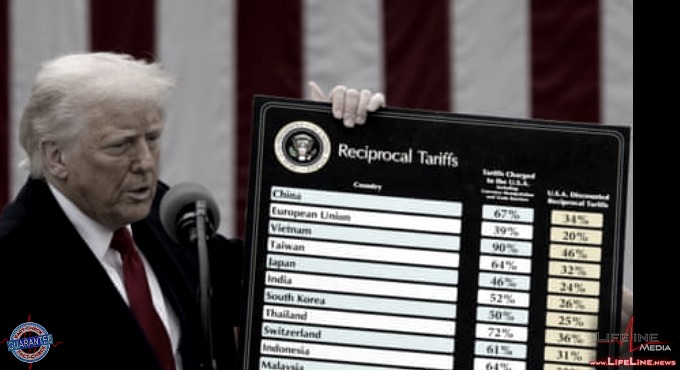How Trump’s Tough Tariffs Could Change Jobs and Prices for American Families

FACT-CHECK GUARANTEE
Political Tilt
& Emotional Tone
The article presents Trump’s ’America First’ policies with a focus on protectionism and nationalist economic measures, reflecting a center-right political perspective with conservative leanings.
Generated using artificial intelligence.
The tone is largely neutral and balanced, highlighting both potential benefits and drawbacks without strong emotional language or bias.
Generated using artificial intelligence.
Updated:
Read
Donald Trump’s “America First” trade doctrine is back in the spotlight, drawing both concern and support as it shakes global markets.
The U.S. president’s renewed push for tariffs and protectionist measures has triggered sharp reactions — on Wall Street, in boardrooms from Tokyo to Berlin, and in living rooms across the United States. While the world watches closely, Americans may feel the effects most directly.
At the core of Trump’s plan are tariffs — big ones. He proposes a 25% levy on imported cars and auto parts.
The message is simple: bring auto jobs back to states like Michigan and Ohio, revive struggling factories, and boost American manufacturing. Yet, the reality is more complicated.
Some union workers welcome the prospect of more jobs, but car buyers brace for higher prices. Industry leaders warn that increased costs will be passed on to consumers, squeezing households already strained by inflation.
The steel and aluminum industries are also in Trump’s sights. He wants another 25% tariff on imports from Asia and Europe, citing what he calls “unfair competition.” The goal is to give U.S. producers a fighting chance.
Early evidence suggests the policy is having an effect — Japanese and South Korean steel exports to the U.S. have dropped sharply. However, critics argue that retaliation is inevitable. Foreign governments are considering their own tariffs, targeting everything from American whiskey to technology exports.
Trump’s protectionist approach extends beyond heavy industry.
He has proposed a 100% tariff on foreign films — a move supporters call a bold defense of American culture, while detractors see it as economic nationalism gone too far.
Hollywood studios are split; some hope for less competition, while others fear international backlash and lost overseas revenue.
Broader Economic and Global Consequences
President Trump claims these tariffs will generate enough revenue to cut income taxes for everyone. Economists remain skeptical. Most say tariffs raise consumer prices and disrupt supply chains far more than they boost government coffers.
Despite doubts, House Republicans are backing Trump’s agenda. They are drafting legislation to ramp up domestic energy production, promising that new revenue will fund tax cuts for workers and businesses.
Markets have responded poorly to the uncertainty.
The MSCI World Stock Index recently saw its steepest drop since late 2022, rattling investors from New York to London to Shanghai. Some analysts warn of recession risks; others believe the volatility is an overdue correction after years of policies that favored foreign competitors.
There is more at stake than trade flows or stock prices. Trump’s America First doctrine is reshaping foreign policy as well. His administration signaled a shift toward transactional diplomacy — less open-ended aid and more negotiation focused on U.S. interests.
Ukraine has already felt this change as American support becomes more conditional. The shift has forced both allies and adversaries to reconsider their strategies.
Despite the upheaval — market swings, trade disputes, and diplomatic recalibrations — some U.S. industries remain resilient. Sectors like computers, communications equipment, and automobiles continue robust production, supported by strong domestic demand.
Still, it remains unclear whether Trump’s approach will benefit American workers or deepen global divisions and economic challenges. For now, one thing is certain: with “America First” back at center stage, uncertainty prevails — and no one can predict what comes next.

This is a great part-time Work for everyone… Best part about it is that you can work from your home and earn from 1000-5000 Dollars each week .….. Start today and have your first payment at the end of the week… Www.HighProfit1.Com